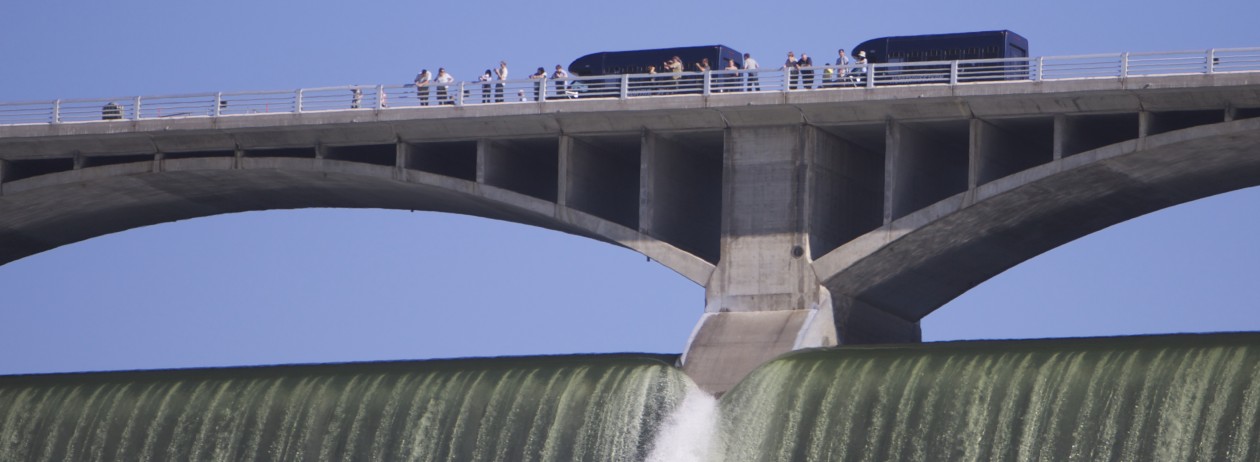
Grand Coulee Dam Visitor Center Begins Laser Light Show May 28
GRAND COULEE, Washington – On May 28, Grand Coulee Dam Visitor Center will begin its extended summer season hours, along with its Laser Light Show which plays nightly through the end of September.
Visitor Center hours will be from 8:30 a.m. until one hour past the start of the Laser Light Show. Through the end of July, the show will begin at 10 p.m. For August, the show begins at 9:30 p.m. and for September, 8:30 p.m.
May 28 will also begin an increase in the number of public tours into the John W. Keys III Pump-Generating Plant. These one hour tours occur daily from 10 a.m. – 5 p.m. Visitors will ride a shuttle bus to the pumping plant to view gigantic pumps lifting water from Lake Roosevelt to Banks Lake, which then delivers water throughout the Columbia Basin Irrigation Project. The shuttle will then take visitors across the top of Grand Coulee Dam for spectacular views of Lake Roosevelt and the Columbia River.
Tours are on a first-come, first-served basis. No reservations are taken and space is limited.
For more information call the Grand Coulee Dam Visitor Center at (509) 633-9265. Or visit: http://www.usbr.gov/pn/grandco







